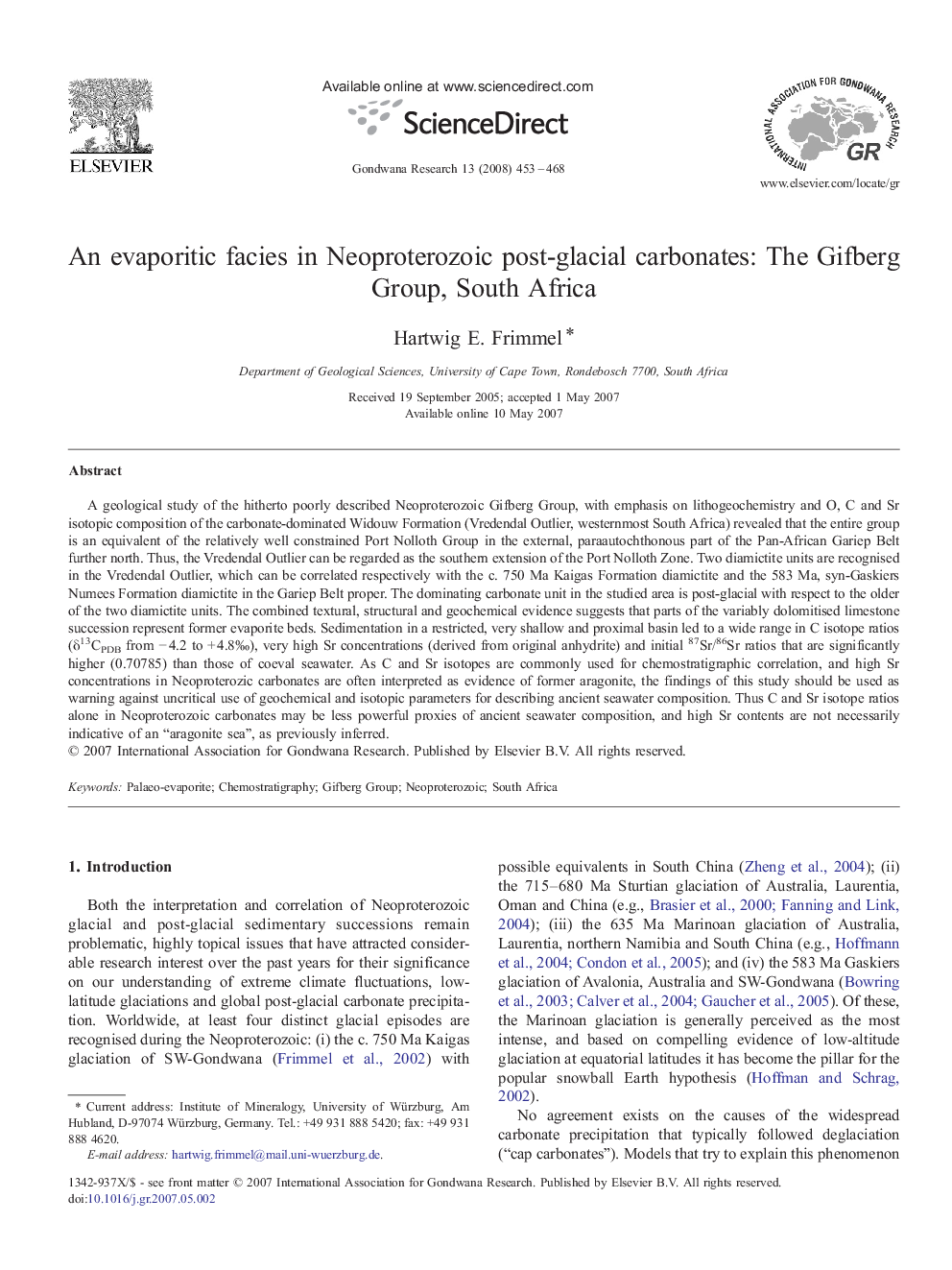| کد مقاله | کد نشریه | سال انتشار | مقاله انگلیسی | نسخه تمام متن |
|---|---|---|---|---|
| 4727683 | 1356389 | 2008 | 16 صفحه PDF | دانلود رایگان |

A geological study of the hitherto poorly described Neoproterozoic Gifberg Group, with emphasis on lithogeochemistry and O, C and Sr isotopic composition of the carbonate-dominated Widouw Formation (Vredendal Outlier, westernmost South Africa) revealed that the entire group is an equivalent of the relatively well constrained Port Nolloth Group in the external, paraautochthonous part of the Pan-African Gariep Belt further north. Thus, the Vredendal Outlier can be regarded as the southern extension of the Port Nolloth Zone. Two diamictite units are recognised in the Vredendal Outlier, which can be correlated respectively with the c. 750 Ma Kaigas Formation diamictite and the 583 Ma, syn-Gaskiers Numees Formation diamictite in the Gariep Belt proper. The dominating carbonate unit in the studied area is post-glacial with respect to the older of the two diamictite units. The combined textural, structural and geochemical evidence suggests that parts of the variably dolomitised limestone succession represent former evaporite beds. Sedimentation in a restricted, very shallow and proximal basin led to a wide range in C isotope ratios (δ13CPDB from − 4.2 to + 4.8‰), very high Sr concentrations (derived from original anhydrite) and initial 87Sr/86Sr ratios that are significantly higher (0.70785) than those of coeval seawater. As C and Sr isotopes are commonly used for chemostratigraphic correlation, and high Sr concentrations in Neoproterozic carbonates are often interpreted as evidence of former aragonite, the findings of this study should be used as warning against uncritical use of geochemical and isotopic parameters for describing ancient seawater composition. Thus C and Sr isotope ratios alone in Neoproterozoic carbonates may be less powerful proxies of ancient seawater composition, and high Sr contents are not necessarily indicative of an “aragonite sea”, as previously inferred.
Journal: Gondwana Research - Volume 13, Issue 4, July 2008, Pages 453–468